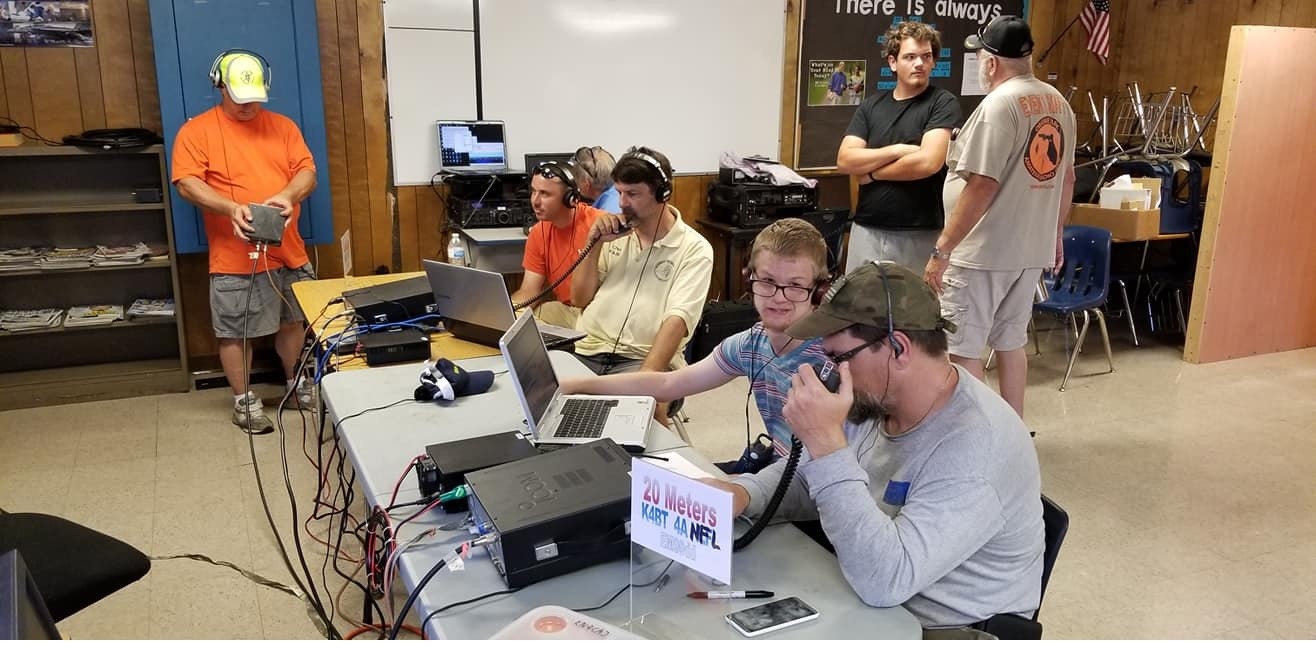Clay County is on the air
How amateur radio is making the world a small place
ORANGE PARK – Members of the Clay County Amateur Radio Emergency Service and the Orange Park Amateur Radio Club recently reached out to the world.
Amateur radio operators turned classrooms into …
This item is available in full to subscribers.
Attention subscribers
To continue reading, you will need to either log in to your subscriber account, or purchase a new subscription.
If you are a current print subscriber, you can set up a free website account and connect your subscription to it by clicking here.
If you are a digital subscriber with an active, online-only subscription then you already have an account here. Just reset your password if you've not yet logged in to your account on this new site.
Otherwise, click here to view your options for subscribing.
Please log in to continueDon't have an ID?Print subscribersIf you're a print subscriber, but do not yet have an online account, click here to create one. Non-subscribersClick here to see your options for subscribing. Single day passYou also have the option of purchasing 24 hours of access, for $1.00. Click here to purchase a single day pass. |
Clay County is on the air
How amateur radio is making the world a small place
ORANGE PARK – Members of the Clay County Amateur Radio Emergency Service and the Orange Park Amateur Radio Club recently reached out to the world.
Amateur radio operators turned classrooms into command centers as they hunkered down for its annual National Field Day for ham radio enthusiasts held June 23 at Orange Park High.
“To me it was always a sort of fascinating thing,” said Jeff Martin, a guest at the field day. “I’ve talked to people, the farthest was in the Indian ocean. It’s really interesting. I like it as a hobby.”
Amateur, or ham radio, is the use of radio frequencies for non-commercial communications.
The objective of the field day, is for ham radio groups to make contact with as many states across the country as possible in 24 hours, all while running on a generator, in order to simulate an emergency situation.
However, the ultimate goal of the event is to increase public awareness and incite interest in amateur radio. Attendees were able to learn more about the science behind radio operation and learn how to obtain an Federal Communications Commission license to broadcast on their personal radios.
Amateur radio also plays a pivotal role in emergency communications during natural disasters. During Hurricanes Hermine, Matthew and Irma, ARES set up shop in Clay County shelters and were able to provide alternate communication between shelters. In the event of an Emergency Operation Center communication break-down during a storm, ARES can step in as an auxiliary. During some of the most catastrophic disasters of recent years, Clay County amateur radio was able to intercept and help relay messages to first responders during Hurricanes Sandy and Harvey.
“The motto is: If all else fails, amateur radio,” said Scott Roberts, assistant emergency coordinator and public information officer of Clay County ARES. “We don’t want to wait until everything fails, we want to be there to help before that happens.”
As the fast-paced age of social media seems to over shadow radio communications, ARES and OPARC are still determined reach the next generation of amateur broadcasters.
“Amateur radio has the reputation of being for your grandpa, and it’s not that way anymore, a lot of kids are getting involved,” said Roberts. “The older people are starting to pass on, we need to get the younger people involved, so when there is an emergency and there is no communication, we’ve got radio operators.
According to Roberts, kids as young as 9 in Clay County are involved with the club and have received their FCC license to use ham radios.








